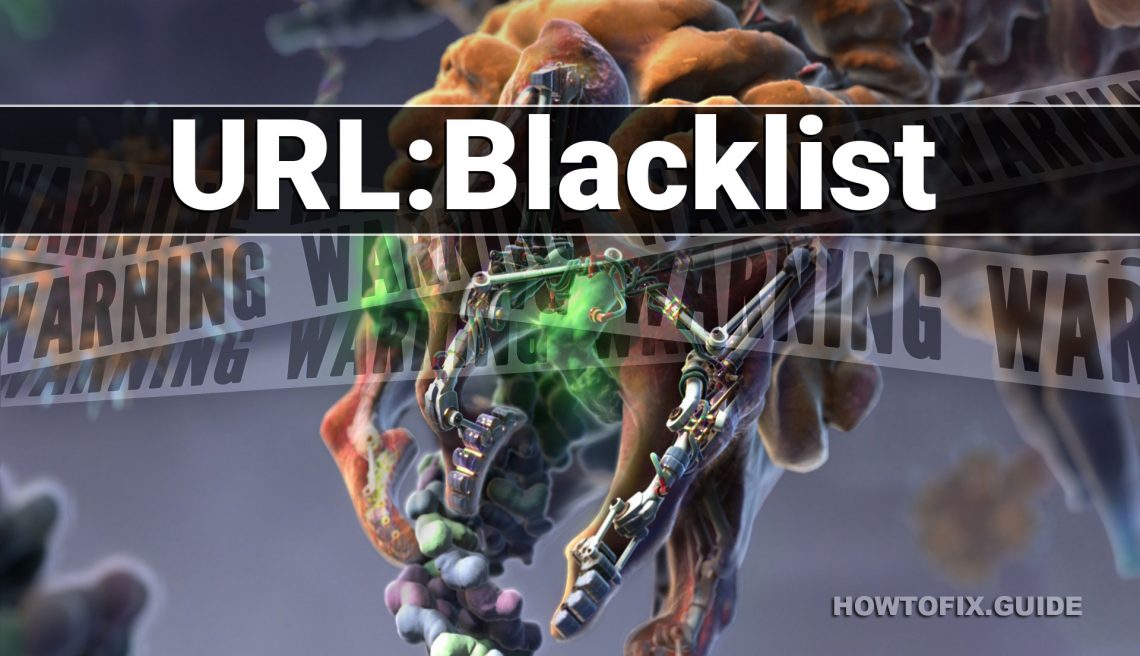Avast Antivirus or AVG actively utilizes the detection name “URL:Blacklist” to identify URLs linked to malicious websites or phishing scams. When Avast identifies a URL as blacklisted, it instantly prevents access to that site, thereby shielding users from potentially harmful content.
URL:Blacklist
✅ URL:Blacklist is a detection term used by antivirus and security software to indicate that a specific URL or web address has been added to a blacklist. Blacklisting is a common cybersecurity technique used to block access to known malicious websites or URLs that are associated with phishing, malware distribution, or other cyber threats.
When a URL receives the URL:Blacklist flag, it indicates that the website connected to that specific URL has been reported or recognized as a source of malicious activity. Accessing such websites might pose risks to the user’s computer or data. Consequently, web browsers, antivirus software, and other security tools utilize URL blacklists as a preventive measure, effectively blocking access to these dangerous websites and ensuring users’ safety from potential threats.
Malicious websites serve as conduits for distributing malware and unlawfully collecting personal information from unsuspecting individuals. Conversely, phishing scams aim to deceive users into disclosing sensitive data, such as usernames, passwords, or credit card numbers.
To safeguard yourself against malware and various online threats, it is of utmost importance to rely on trusted anti-malware software, consistently update your operating system and other software, and exercise caution when interacting with suspicious links or downloading files from unfamiliar sources. By adhering to these practices, you can significantly bolster your online security and protect your valuable data from potential cyber-attacks.
What does URL:Blacklist detection mean?
Avast or AVG presents the URL:Blacklist detection message displayed in the lower right corner. While these anti-malware programs are generally proficient in scanning, they are known to be somewhat unreliable and susceptible to malware attacks. Their user interface can be glitchy, and their ability to effectively remove malware can be problematic. Consequently, the pop-up indicating the presence of URL:Blacklist should be regarded as an alert rather than a reliable solution. To effectively eliminate it, it is advisable to utilize an alternative anti-malware program.
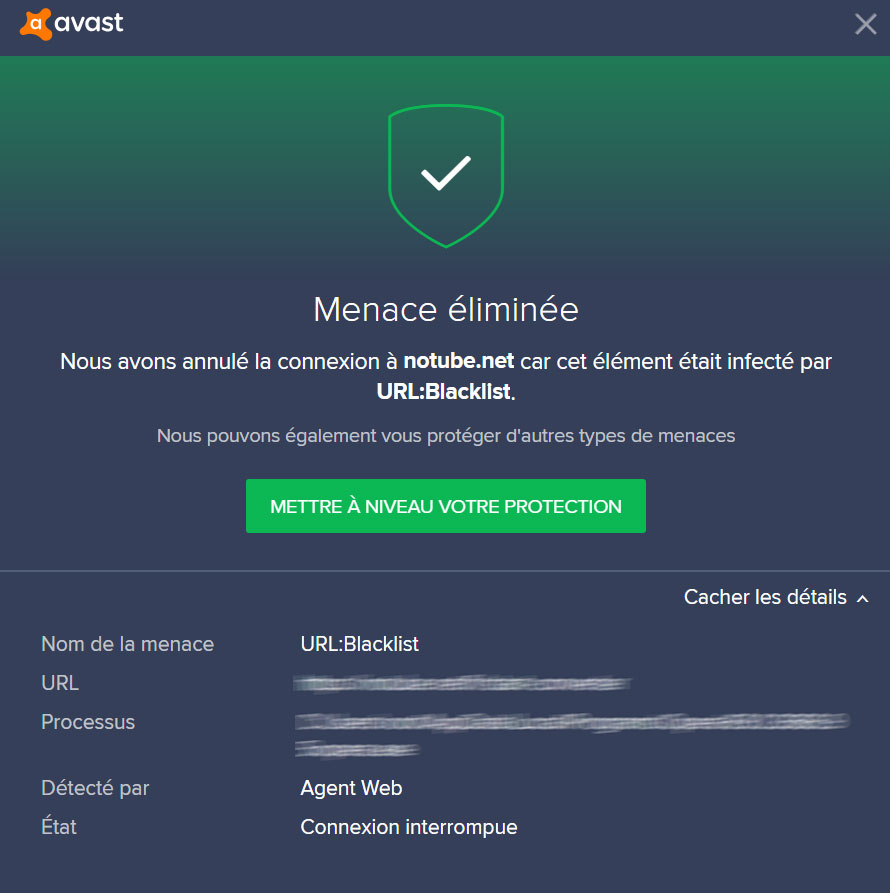
URL:Blacklist
The URL:Blacklist virus is an extremely troublesome entity. It infiltrates your system under the guise of something seemingly innocuous, often disguising itself as a legitimate component or an application obtained from a forum. Once inside, it takes various actions to weaken your system’s defenses. To make matters worse, it proceeds to download additional malicious elements, fulfilling the desires of the cyber criminals who control this virus. As a result, predicting the exact consequences of URL:Blacklist’s actions becomes nearly impossible, and unpredictability is one of the most concerning aspects when it comes to dealing with malware. It is therefore highly advisable to avoid encountering this virus altogether, denying it any opportunity to carry out its malicious objectives.
Threat Summary:
| Name | URL:Blacklist Malware |
| Detection | URL:Blacklist |
| Details | URL:Blacklist is attached to another program (such as a document), which can replicate and spread after an initial execution. |
| Fix Tool | See If Your System Has Been Affected by URL:Blacklist Malware |
Is URL:Blacklist dangerous?
As I have stated previously, non-harmful malware does not exist. And URL:Blacklist is not an exclusion. This virus changes the system configurations and modifies the Group Policies and Windows registry. All of these things are critical for correct system operation, even in cases when we are not talking about system security. Therefore, the virus that URL:Blacklist carries, or which it will inject after some time, will try to get maximum profit from you. Cybercriminals can grab your personal information and then sell it on the black market. Using adware and browser hijacker functionality embedded in URL:Blacklist malware, they can make money by showing you the ads. Each view gives them a penny, but 100 views per day = $1. 1000 victims who watch 100 banners daily – $1000. Easy math, but sad conclusions. It is a bad choice to be a donkey for crooks.
How did I get this virus?
It is difficult to trace malware’s origins on your PC. Nowadays, things are mixed, and spreading ways utilized by adware six years ago may be used by spyware these days. But if we abstract from the exact spreading method and will think of why it has success, the explanation will be really simple – low level of cybersecurity knowledge. People click on ads on weird websites, open the pop-ups they get in their browsers, and call the “Microsoft tech support,” thinking that the odd banner that states about malware is true. It is necessary to recognize what is legit – to avoid misconceptions when attempting to identify a virus.
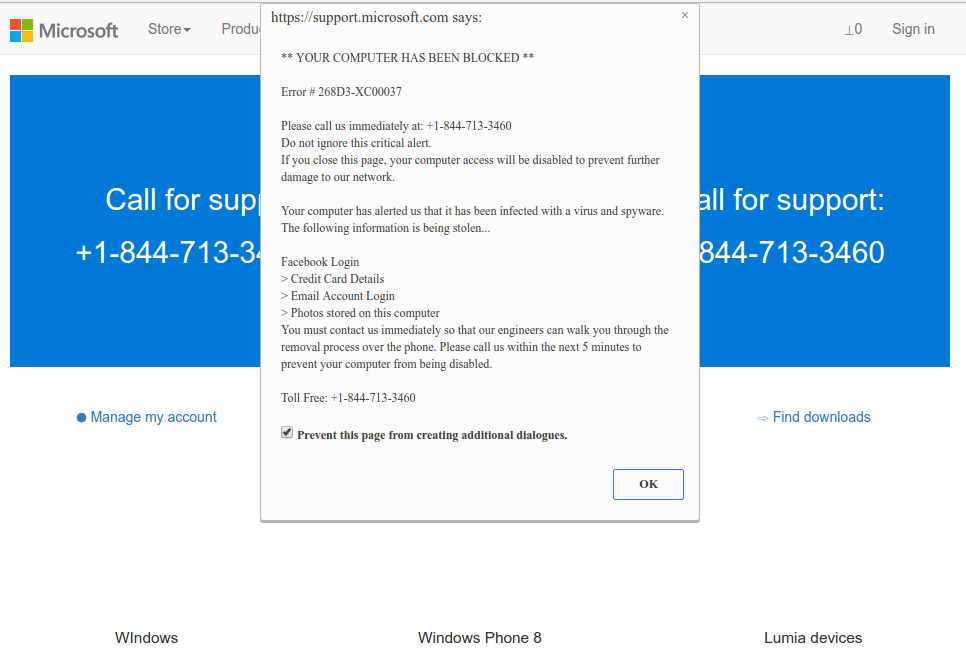
Microsoft Tech Support Scam
Nowadays, there are two of the most widespread ways of malware spreading – lure emails and injection into a hacked program. While the first one is not so easy to stay away from – you must know a lot to recognize a counterfeit – the 2nd one is simple to solve: do not use cracked applications. Torrent trackers and various other providers of “totally free” applications (which are, in fact, paid but with a disabled license checking) are a giveaway place of malware. And URL:Blacklist is just among them.
How to remove the URL:Blacklist from my PC?
URL:Blacklist malware is complicated to erase by hand. It places its files in several locations throughout the disk and can get back itself from one of the elements. In addition, a range of alterations in the windows registry, networking settings, and Group Policies are really hard to locate and revert to the original. It is far better to utilize a specific program – exactly, an anti-malware app. GridinSoft Anti-Malware will fit the most ideal for malware elimination purposes.
Remove URL:Blacklist with Gridinsoft Anti-Malware
We have also been using this software on our systems ever since, and it has always been successful in detecting viruses. It has blocked the most common Scams as shown from our tests with the software, and we assure you that it can remove URL:Blacklist as well as other malware hiding on your computer.
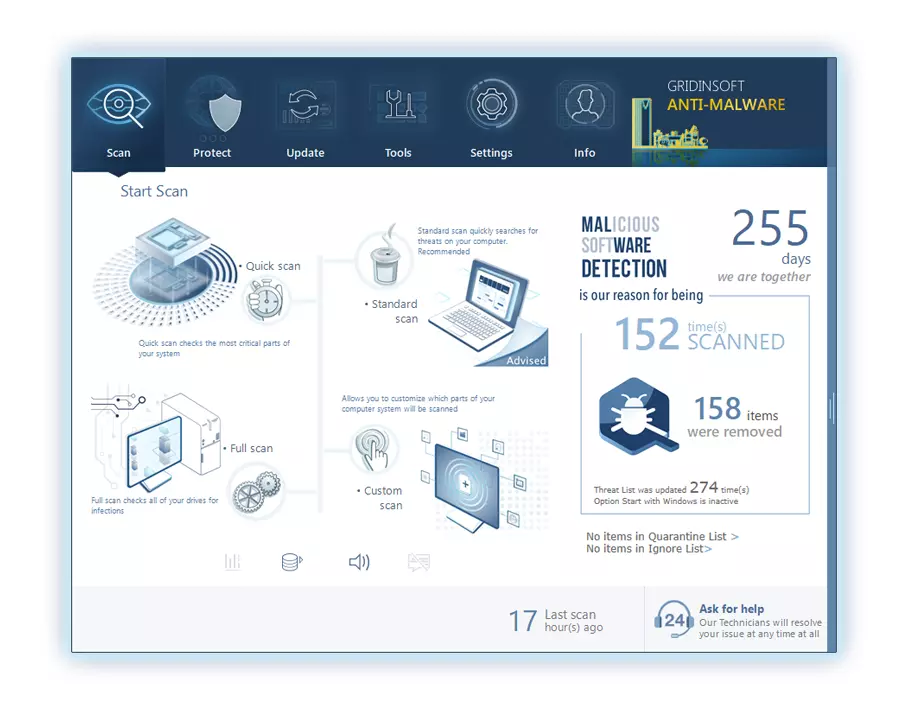
To use Gridinsoft for remove malicious threats, follow the steps below:
1. Begin by downloading Gridinsoft Anti-Malware, accessible via the blue button below or directly from the official website gridinsoft.com.
2.Once the Gridinsoft setup file (setup-gridinsoft-fix.exe) is downloaded, execute it by clicking on the file.
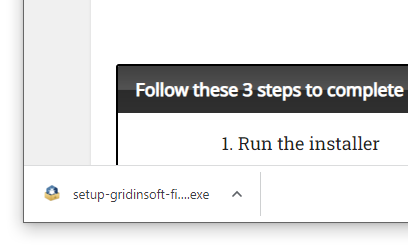
3.Follow the installation setup wizard's instructions diligently.
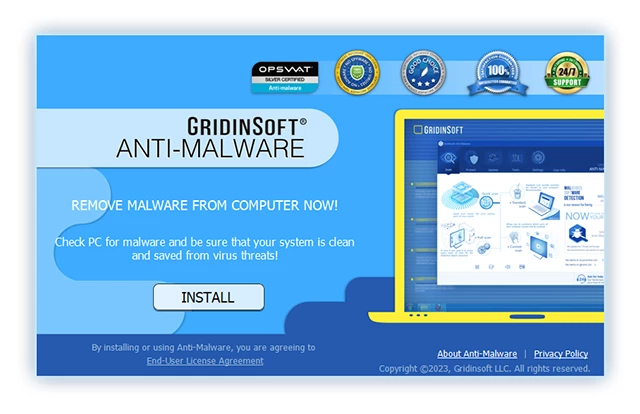
4. Access the "Scan Tab" on the application's start screen and launch a comprehensive "Full Scan" to examine your entire computer. This inclusive scan encompasses the memory, startup items, the registry, services, drivers, and all files, ensuring that it detects malware hidden in all possible locations.
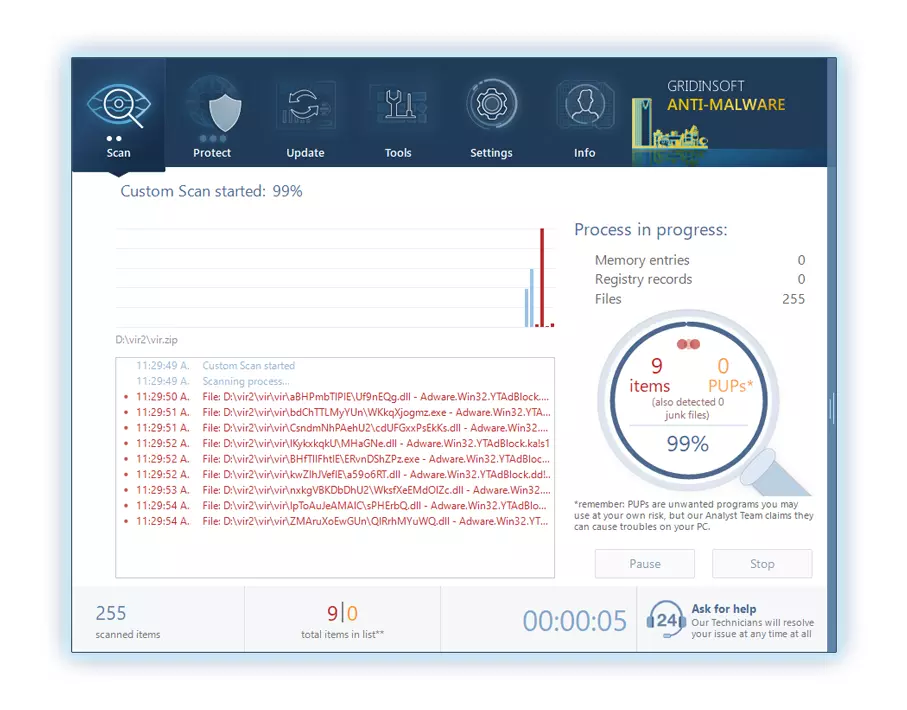
Be patient, as the scan duration depends on the number of files and your computer's hardware capabilities. Use this time to relax or attend to other tasks.
5. Upon completion, Anti-Malware will present a detailed report containing all the detected malicious items and threats on your PC.

6. Select all the identified items from the report and confidently click the "Clean Now" button. This action will safely remove the malicious files from your computer, transferring them to the secure quarantine zone of the anti-malware program to prevent any further harmful actions.
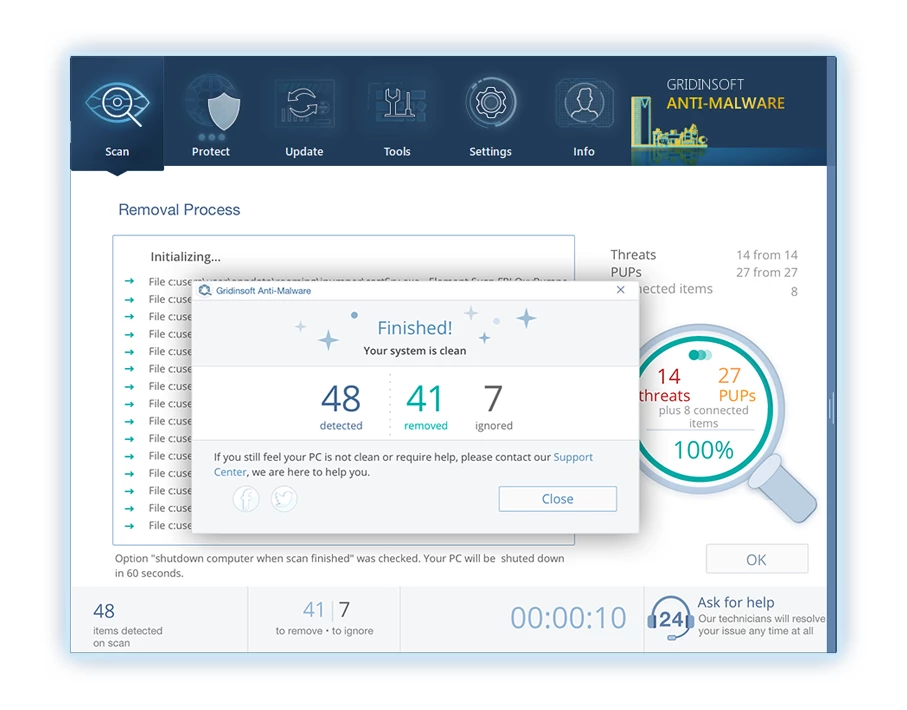
8. If prompted, restart your computer to finalize the full system scan procedure. This step is crucial to ensure thorough removal of any remaining threats. After the restart, Gridinsoft Anti-Malware will open and display a message confirming the completion of the scan.
Remember Gridinsoft offers a 6-day free trial. This means you can take advantage of the trial period at no cost to experience the full benefits of the software and prevent any future malware infections on your system. Embrace this opportunity to fortify your computer's security without any financial commitment.
Trojan Killer for “URL:Blacklist” removal on locked PC
In situations where it becomes impossible to download antivirus applications directly onto the infected computer due to malware blocking access to websites, an alternative solution is to utilize the Trojan Killer application.
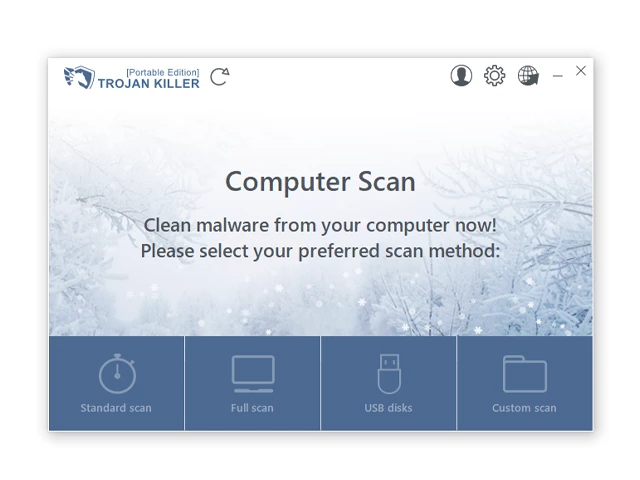
There is a really little number of security tools that are able to be set up on the USB drives, and antiviruses that can do so in most cases require to obtain quite an expensive license. For this instance, I can recommend you to use another solution of GridinSoft - Trojan Killer Portable. It has a 14-days cost-free trial mode that offers the entire features of the paid version. This term will definitely be 100% enough to wipe malware out.
Trojan Killer is a valuable tool in your cybersecurity arsenal, helping you to effectively remove malware from infected computers. Now, we will walk you through the process of using Trojan Killer from a USB flash drive to scan and remove malware on an infected PC. Remember, always obtain permission to scan and remove malware from a computer that you do not own.
Step 1: Download & Install Trojan Killer on a Clean Computer:
1. Go to the official GridinSoft website (gridinsoft.com) and download Trojan Killer to a computer that is not infected.
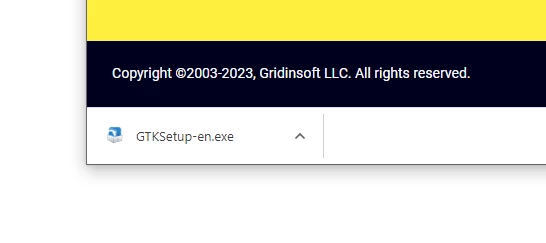
2. Insert a USB flash drive into this computer.
3. Install Trojan Killer to the "removable drive" following the on-screen instructions.
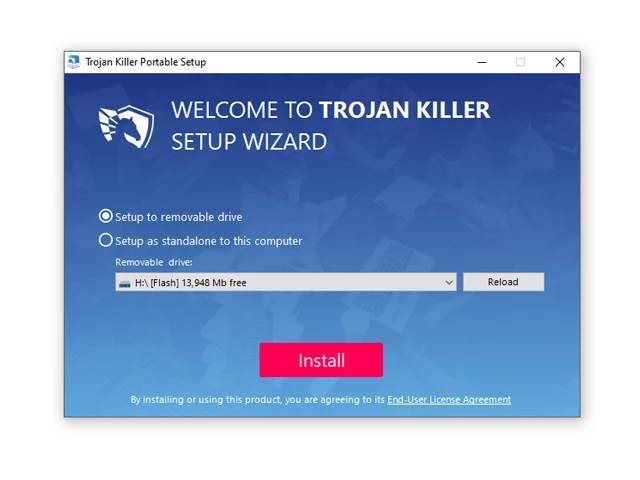
4. Once the installation is complete, launch Trojan Killer.
Step 2: Update Signature Databases:
5. After launching Trojan Killer, ensure that your computer is connected to the Internet.
6. Click "Update" icon to download the latest signature databases, which will ensure the tool can detect the most recent threats.
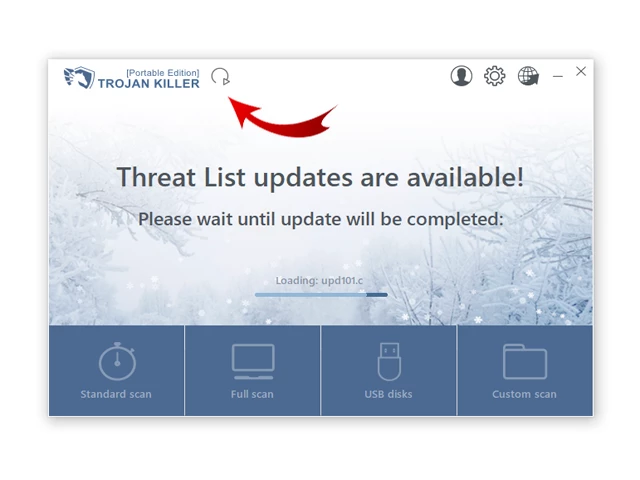
Step 3: Scan the Infected PC:
7. Safely eject the USB flash drive from the clean computer.
8. Boot the infected computer to the Safe Mode.
9. Insert the USB flash drive.
10. Run tk.exe
11. Once the program is open, click on "Full Scan" to begin the malware scanning process.

Step 4: Remove Found Threats:
12. After the scan is complete, Trojan Killer will display a list of detected threats.

13. Click on "Cure PC!" to remove the identified malware from the infected PC.
14. Follow any additional on-screen prompts to complete the removal process.
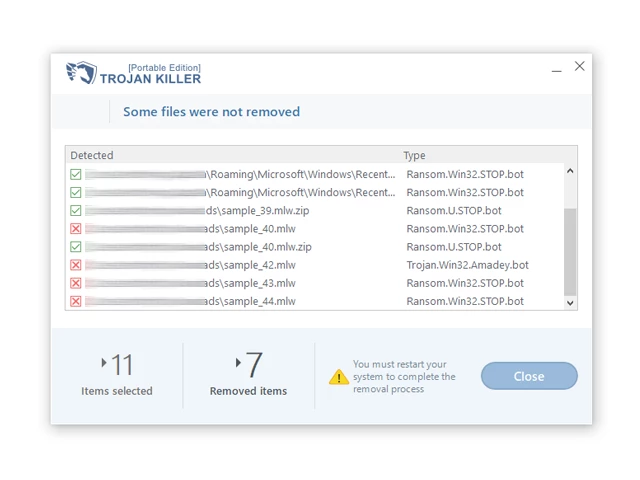
Step 5: Restart Your Computer:
15. Once the threats are removed, click on "Restart PC" to reboot your computer.
16. Remove the USB flash drive from the infected computer.
Congratulations on effectively removing URL:Blacklist and the concealed threats from your computer! You can now have peace of mind, knowing that they won't resurface again. Thanks to Gridinsoft's capabilities and commitment to cybersecurity, your system is now protected.
Avast Detections
- URL:Scam
- IDP.ALEXA.54 Dangerous or Avast (AVG) False Positive?
- IDP.HEUR.26 Malware: A Complete Removal Guide
- IDP.Generic Malware ✔️ Avast IDP Generic Detection
- Win32:BogEnt Virus (Avast Detection)
- Win32:Trojan-gen Avast Virus
- URL:Phishing Avast Virus Detection: What Is It?
- URL:TechScam Avast Virus (TechScam Detection)
- URL:Blacklist (Blacklisted URL) Avast Detection
- IDP.HEUR.24 Virus Detection by Avast
How to Remove URL:Blacklist Malware
Name: URL:Blacklist
Description: URL:Blacklist is a detection name that Avast Antivirus or AVG uses to identify URLs associated with malicious websites or phishing scams. When Avast detects a URL on its blacklist, it will block access to that site to protect the user from potentially harmful content.
Operating System: Windows
Application Category: Malware

